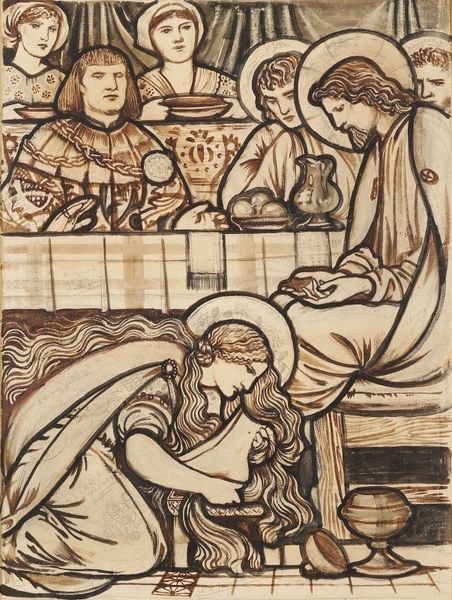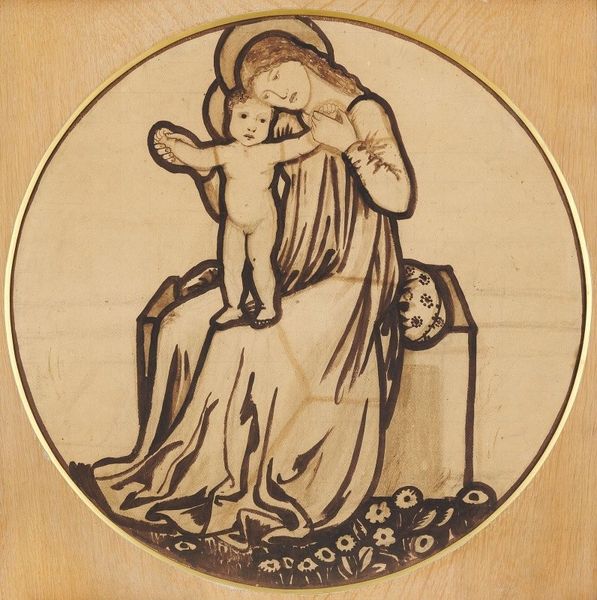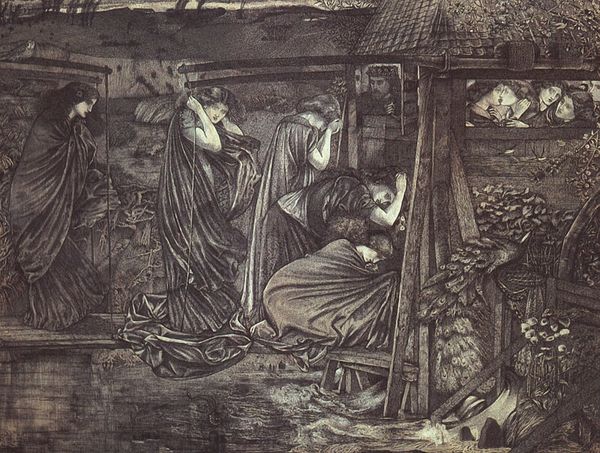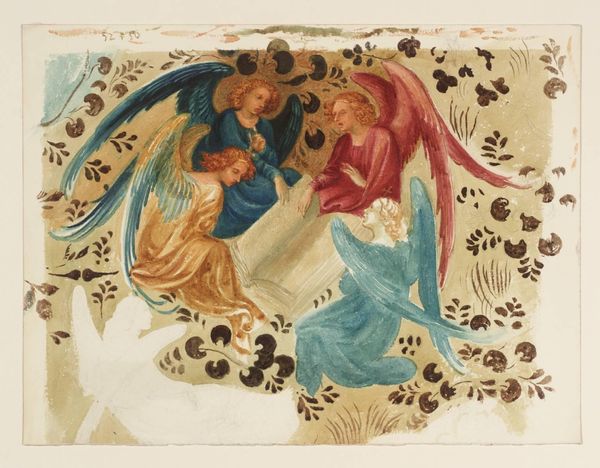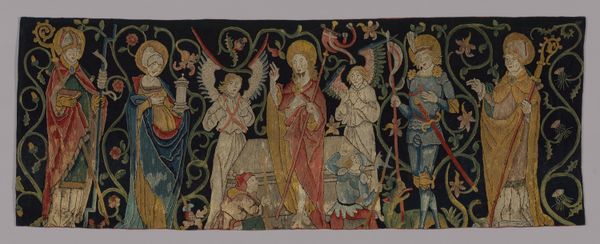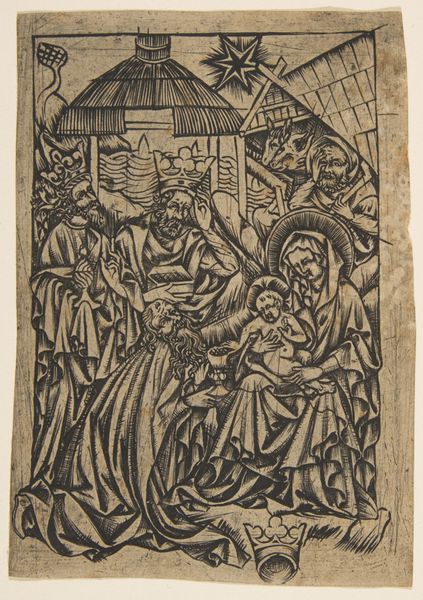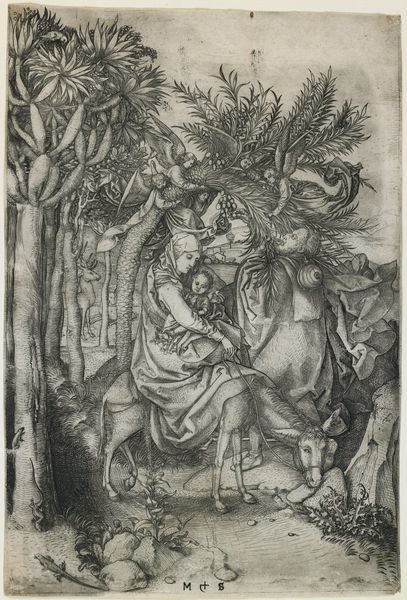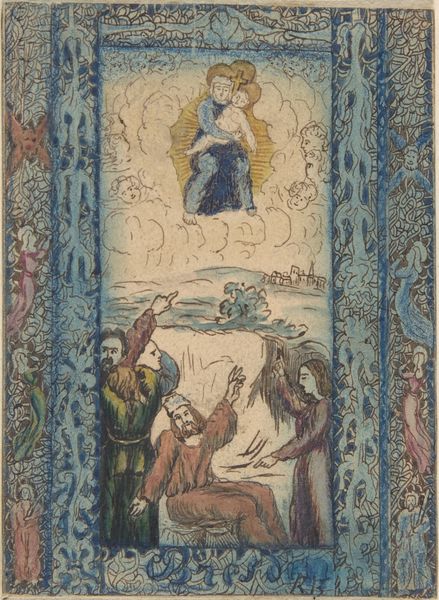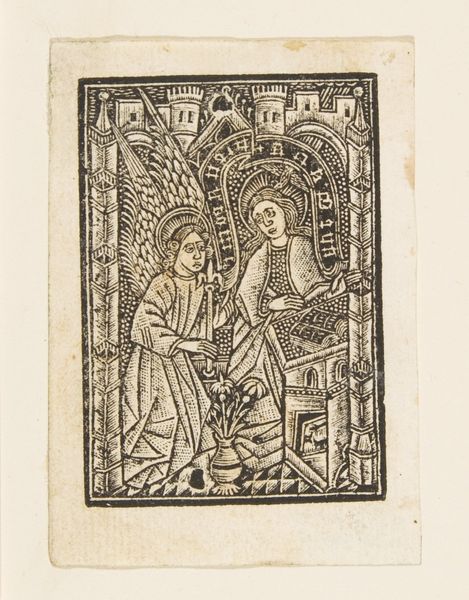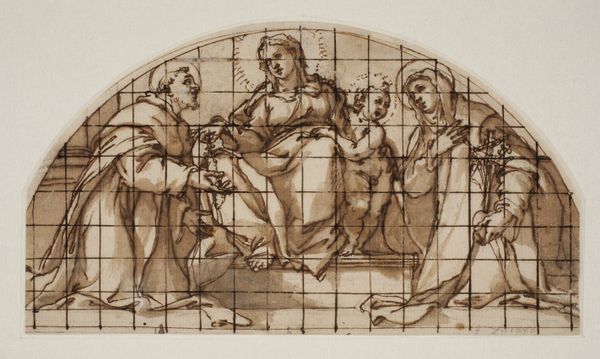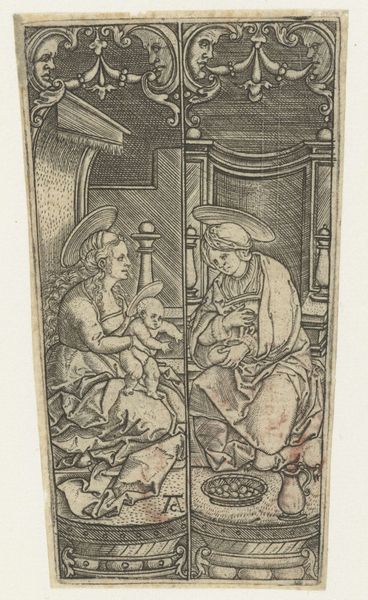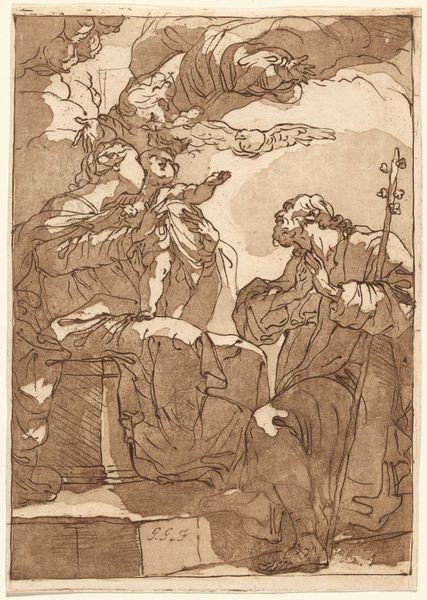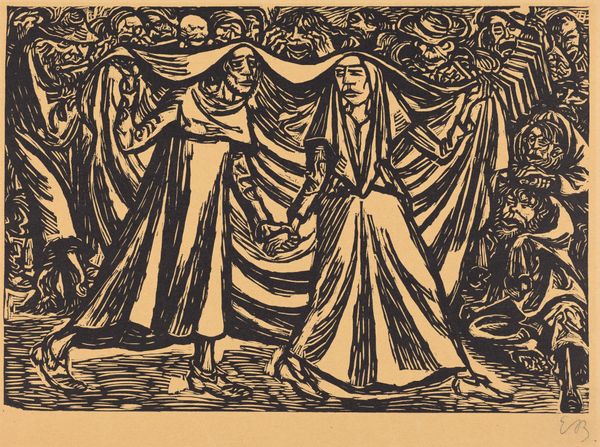
drawing, pencil, charcoal
#
drawing
#
narrative-art
#
charcoal drawing
#
figuration
#
oil painting
#
romanticism
#
pencil
#
watercolour illustration
#
charcoal
#
history-painting
#
academic-art
Copyright: Public Domain: Artvee
Curator: Welcome. Today, we’re looking at “The Annunciation,” a charcoal drawing by Edward Burne-Jones. Editor: My initial impression is one of subdued drama. The limited color palette and delicate lines create a sense of quiet reverence despite the momentous event taking place. There's an intriguing textural contrast between the smooth figures and the detailed background. Curator: Indeed. Burne-Jones, deeply embedded in the Aesthetic movement, sought to revive medieval artistic traditions. His works often referenced religious and historical narratives, using them as vehicles for exploring beauty and idealism, and he was well-positioned in society to be accepted in prominent exhibitions, later influencing public tastes. Editor: Looking closer, I’m fascinated by the use of charcoal. It seems almost paradoxical to use such a rough, inherently dark medium to depict such a traditionally luminous scene. What considerations shaped his choice of such materials? Curator: The choice of charcoal provides Burne-Jones with a lot of tonal depth while also permitting the application of broad washes which allow for areas of dense, expressive shadow. Such materiality allows a sense of volume but retains an unfinished feel and lends the work to closer study. We see the agency and intellect of the artist reflected in such material choices. Editor: Absolutely, I can see it. The figures, though rendered with precise lines, seem almost ethereal because of that smoky effect achieved through charcoal. But more to the point, what impact does it make to remove colour in such a powerful visual narrative, especially a ubiquitous one? Curator: Burne-Jones sought a return to genuine spiritual depth amidst increasing industrialization in Britain. In rendering it in charcoal, the scene moves out of the sphere of conventional depictions and seeks a type of sublime purity. This challenges the very popular aesthetic tastes of the time, positioning the image as almost revolutionary despite its adoption of older narratives and traditions. Editor: I’m particularly drawn to how the artist uses drapery to suggest both form and emotion. The heavy folds seem almost weighted down, hinting at the gravity of the Annunciation. What did the process look like when Burne-Jones considered such choices? Curator: Many scholars note that Burne-Jones filled his studio with fabrics of varying texture and hue, enabling a hands-on exploration of form and shadow, that helped guide such compositional elements, and aided the creation of works for important public consumption in the galleries and salons of the period. Editor: It has been a fascinating and instructive dialogue, especially delving into materiality and broader cultural themes within a religious setting. Curator: Indeed. Examining Burne-Jones and his works always provides fertile ground for discourse. Thank you.
Comments
No comments
Be the first to comment and join the conversation on the ultimate creative platform.
